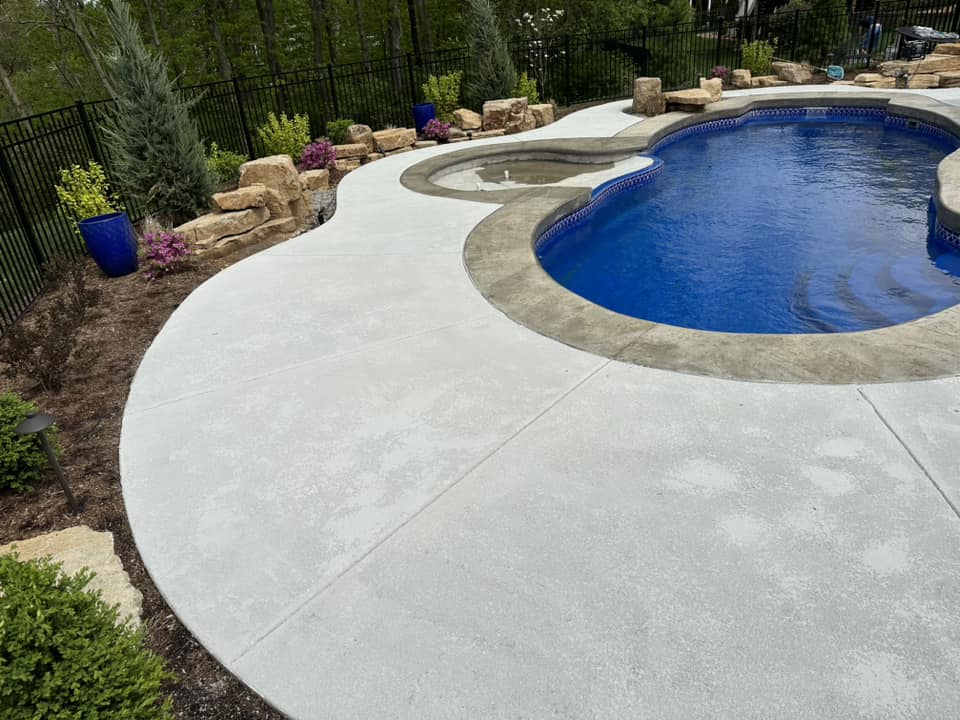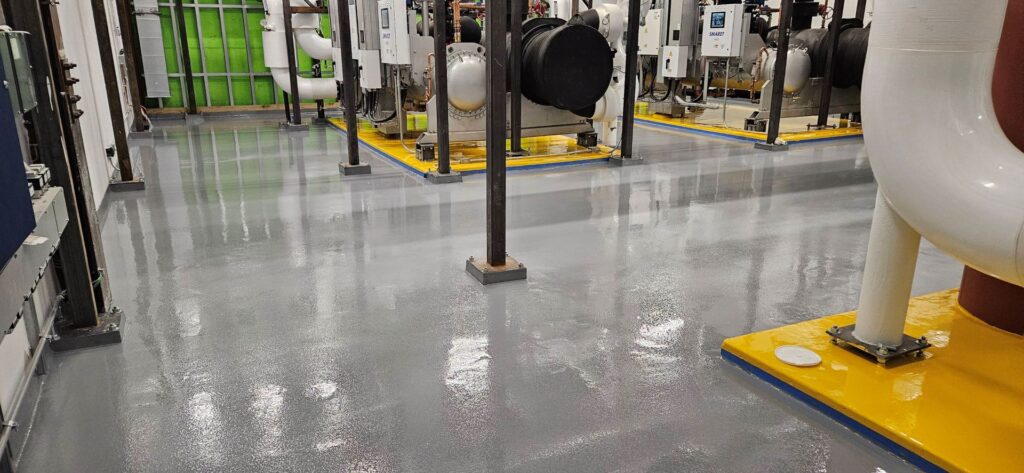How to Repair Cracks and Damage in Your Concrete Floor Before Epoxy Installation
Concrete floors are a popular choice for both residential and commercial buildings due to their durability and sustainability. However, over time, cracks and damage can occur, which not only affects the aesthetics of the floor but also its functionality. This is especially problematic when preparing for an epoxy installation, as epoxy requires a smooth and even surface to adhere properly. But fear not, as repairing cracks and damage in your concrete floor is easier than you might think. In this comprehensive guide, we’ll go over everything you need to know about repairing cracks and damage in your concrete floor before epoxy installation. From identifying the root cause of the damage to selecting the right repair materials and techniques, we’ll cover it all. So, whether you’re a DIY enthusiast or looking for professional guidance, this guide is for you!
Understanding the Importance of Repairing Concrete Floors Before Epoxy Installation
Concrete floors are the backbone of any industrial or commercial setup. They are durable, cost-effective, and can withstand heavy foot traffic. However, over time, the floors can become damaged due to wear and tear, foot traffic, or chemical exposure. Before applying an epoxy coating, it is essential to repair the concrete floors thoroughly. This is because the epoxy coating will only adhere well to a smooth, clean, and solid surface. If the concrete floors are not repaired correctly, the epoxy will not bond well, and the coating will start to peel and chip away.
Repairing concrete floors before applying an epoxy coating is crucial for several reasons. Firstly, repairing the floors will ensure that the epoxy coating will adhere well and last longer. This means that the floors will be more durable, resistant to wear and tear, and will maintain their aesthetic appeal for a more extended period. Secondly, repairing the floors will help to eliminate any safety hazards that may be present. For example, if the floors have potholes or cracks, they can cause tripping hazards, which can result in injuries or accidents. By repairing the floors, you can eliminate these hazards and create a safer working environment.
Repairing concrete floors before applying an epoxy coating is a crucial step that should not be overlooked. It is essential to ensure that the floors are smooth, clean, and solid before applying the coating to ensure that it adheres well and lasts longer. Repairing the floors will also eliminate any safety hazards and create a safer working environment. So, before applying an epoxy coating, take the time to repair your concrete floors – it will be worth it in the long run.

Repairing Concrete FloorRepairing Concrete Floor
Types of Damages to Concrete Floors
Before you begin the repair process, it’s crucial to identify the type of damage present on your concrete floors. This will help you determine the best approach and materials for repairing them. Here are some common types of damages that can occur on concrete floors:
- Cracks: These are thin lines or openings in the surface of the floor, caused by shrinkage or expansion due to temperature changes, shifting soil, heavy loads, or weak concrete.
- Spalling: This is when small pieces of concrete break off from the surface, usually caused by freeze-thaw cycles or high water pressure in pores.
- Pitting: Pits are small, shallow holes in the surface of the concrete, often caused by exposure to chemicals or heavy impacts.
- Pop-outs: These are when small chunks of concrete break off from the surface due to internal pressure from moisture or freezing.
- Efflorescence: This is a white, powdery substance that forms on the surface of concrete, caused by water-soluble salts being brought to the surface.
It’s essential to identify the type of damage present and its root cause before beginning any repairs. This will ensure that you choose appropriate materials and techniques for a successful repair job.
Materials and Tools Needed for Repairing Concrete Floor Before Epoxy Installation
Now that you know the importance of repairing your concrete floors and the types of damages to look out for, it’s time to gather the necessary materials and tools. Here are some essential items you’ll need for a successful repair job:
- Protective gear: Safety should always be a top priority when working with any construction materials. Make sure to wear gloves, safety glasses, and a dust mask when handling repair materials.
- Cleaning supplies: Before beginning any repairs, it’s crucial to thoroughly clean the damaged area. This will ensure proper adhesion of the repair material. You’ll need a broom or brush, degreaser (if needed), and a pressure washer for larger areas.
- Repair material: The type of repair material you’ll need will depend on the type of damage present. Some common options include epoxy crack filler, concrete patching compound, or mortar mix.
- Trowel: This tool is used to apply the repair material smoothly and evenly onto the damaged area.
- Chisel or grinder: For deeper cracks or spalling, you may need to use a chisel or grinder to open up the crack and create a clean, even surface for the repair material to adhere to.
- Concrete sealer: After completing repairs, it’s essential to seal the surface of the concrete to protect it from future damage.
With these materials and tools on hand, you’ll be well-equipped to tackle any repairs needed on your concrete floors before epoxy installation.

Concrete Epoxy Installation
Techniques for Repairing Concrete Floors Before Epoxy Installation
The technique used for repairing your concrete floors will depend on the type of damage present and the repair material being used. Here are some general steps to follow when repairing common types of damages:
- Cracks: Clean the crack thoroughly and fill it with epoxy crack filler, following the manufacturer’s instructions. Use a trowel to smooth out the surface and remove any excess filler.
- Spalling or pitting: Use a chisel or grinder to open up the damaged area, creating a clean, even surface. Mix your chosen repair material according to instructions and apply it evenly over the damaged area using a trowel.
- Pop-outs: Clean out the popped-out section of concrete and dampen the area with water. Mix your repair material and fill the hole, tearing it smooth.
- Efflorescence: Use a pressure washer to remove any efflorescence from the surface of the concrete. Allow it to dry completely before applying a concrete sealer to prevent future buildup.
- Seal the surface: Once all repairs have been completed, it’s essential to seal the surface of the concrete with a high-quality sealer. This will protect it from future damage and ensure that your epoxy coating adheres well.
It’s essential to follow these techniques carefully and ensure that you use high-quality materials for a successful repair job.
Steps to Repair Concrete Floors Before Epoxy Installation
Now that you have the necessary tools and materials, here are the steps to repair your concrete floors before epoxy installation:
- Clean the surface: Use a pressure washer or hose with a high-pressure nozzle to remove any dirt, debris, and loose pieces of concrete from the damaged area.
- Remove any loose material: Use a wire brush or scraper to remove any remaining loose pieces of concrete.
- Grind or sand the surface: For larger cracks or damages, use a sander or grinder to smooth out the surface and create an even base for patching.
- Patch cracks and small damages: For cracks, use an epoxy crack filler or polyurethane foam injection kit to fill the damaged area. For spalling and pitting, apply a concrete resurfacer with a trowel, putty knife, or squeegee.
- Allow for proper curing: Follow the instructions on your patching compound and filler for curing time before proceeding to the next step.
- Sand and level the surface: Once the compound has cured, sand down any rough edges or bumps and ensure that the surface is level.
- Clean the surface again: Use a damp cloth or mop to remove any dust from sanding.
Your concrete floors are now repaired and ready for commercial epoxy installation!
Repairing your concrete floors before epoxy installation is crucial for a long-lasting and aesthetically pleasing finish. By following these steps and using the right materials and techniques, you can ensure that your floors are properly prepared for the epoxy coating. Don’t overlook any damages or skip proper repair techniques as they will only lead to bigger problems in the future. With some time and effort, you can have beautifully restored concrete floors ready for an epoxy coating that will last for years to come. So, make sure to take the necessary steps to repair any damages on your concrete floors before proceeding with your epoxy installation project.

